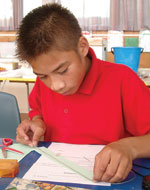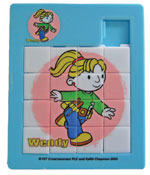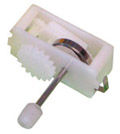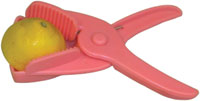| ACKNOWLEDGEMENTS |
 |
The Project
directors acknowledge the vital support and contributions of many people
to this report, including:
• the very dedicated staff of the Educational Assessment Research Unit
• Heleen Visser, Hadyn Green and other staff members of the Ministry of Education
• members of the Project’s National Advisory Committee
• members of the Project’s Technology Advisory Panel
• principals and children of the schools where tasks were trialled
• principals, staff and Board of Trustee members of the 246 schools included in the 2008 sample
• the 2867 children who participated in the assessments and their parents
• the 96 teachers who administered the assessments to the children
• the 43 senior tertiary students who assisted with the marking process
• the 192 teachers who assisted with the marking of tasks early in 2009.
• the people and organisations who granted permission for the publication of their work in this report,
to illustrate our assessment resources. [see Resource Acknowledgments for full details and rights]
OVERVIEW
 |
 The 2008 Technology results show that technology is a highly popular subject area, particularly among year 8 students. Students enjoy making things in school and, at year 8, learning how to use tools. There is moderate growth from year 4 to year 8 in most technology tasks, with stronger gains seen in areas that require generating a design, or looking at broader societal and family concerns of the impact of technology. Gender differences tend to “average out” with students typically doing better with tasks traditionally linked to their gender. Pakeha/Mäori differences and Pakeha/Pasifika differences remained in the moderate to large range, with no discernible trends seen over time. Socio-economic status remained a strong predictor of performance at the school level, with the other school variables showing only a minor influence on results. The 2008 Technology results show that technology is a highly popular subject area, particularly among year 8 students. Students enjoy making things in school and, at year 8, learning how to use tools. There is moderate growth from year 4 to year 8 in most technology tasks, with stronger gains seen in areas that require generating a design, or looking at broader societal and family concerns of the impact of technology. Gender differences tend to “average out” with students typically doing better with tasks traditionally linked to their gender. Pakeha/Mäori differences and Pakeha/Pasifika differences remained in the moderate to large range, with no discernible trends seen over time. Socio-economic status remained a strong predictor of performance at the school level, with the other school variables showing only a minor influence on results. |
| The NEMP Approach to National Monitoring |
 |
New Zealand’s National Education Monitoring Project commenced in 1993, with the task of assessing and reporting on the achievement of New Zealand primary school children in all areas of the school curriculum. Children are assessed at two class levels: year 4 (halfway through primary education) and year 8 (at the end of primary education). Different curriculum areas and skills are assessed each year, over a four-year cycle. The main goal of national monitoring is to provide detailed information about what children know, think and can do, so that patterns of performance can be recognised, successes celebrated, and desirable changes to educational practices and resources identified and implemented.
Each year, random samples of children are selected nationally, then assessed in their own schools by teachers specially seconded and trained for this work.
Task instructions are given orally by teachers, through video presentations, on laptop computers, or in writing. Many of the assessment tasks involve the children in the use of equipment and materials. Their responses are presented orally, by demonstration, in writing, in computer files, or through submission of other physical products. Many of the responses are recorded on videotape for subsequent analysis.
The use of many tasks with both year 4 and year 8 students allows comparisons of the performance of years 4 and 8 students in 2008. Because about 45% of the tasks have been used twice, in 2004 and again in 2008, trends in performance across the four-year period can also be analysed.
In considering the analyses, it should be kept in mind that a large number of questions in technology asked students to think of all the ideas they had on a subject, such as all the ways a product could be improved. We coded a wide variety of responses, and then tallied the number of students providing those responses. This process leads to the inclusion of a large number of responses with fairly low frequencies. As a result, at times it may look like students are not doing well because the number of responses given is often not a large percentage of the number of options available. These percentages should not be interpreted in any way as “percent correct”. They are simply the percentage of students who thought of a particular response.
| Assessing Technology |
 |
In 2008, the second year of the fourth cycle of national monitoring, three areas were assessed: music, aspects of technology, and reading and speaking. This report presents details and results of the assessments of aspects of technology. Technology is a creative, purpose-ful activity aimed at meeting needs and opportunities through the development of products, systems or environments. Knowledge, skills and resources are combined to help solve practical problems in particular social contexts.
A framework for technology education and its assessment is presented in Chapter 2. The framework highlights the three strands of the New Zealand technology curriculum:
• technological knowledge and understanding;
• technological capability;
• understanding and awareness of the relationship between technology and society.
|
|
| Technology is a multidisciplinary activity. To attempt to represent all or even most of the areas, meanings and applications of technology within the national monitoring assessment programme would be unrealistic. After careful examination of the scope of the technology curriculum, it was decided to assess some key aspects, with a particular focus on the knowledge, understandings and skills listed above. Selected areas of content and broadly overlapping contexts (e.g. personal, home, school, community) have been used to investigate the ideas students have and the processes they can use. |
| Technological Knowledge and Understanding |
 |
|
Chapter 3 looks at student knowledge and understanding of technology, and is assessed through the use of nine tasks. Substantial growth was seen from year 4 to year 8 on most, but not all, tasks. Generally speaking, year 8 students were able to provide more details when questioned about aspects of objects, and were able to provide better explanations of their ideas. There were 91 separate task components asked of students at both year 4 and year 8, with year 8 students providing correct or strong responses 41% of the time and year 4 students doing so 32% of the time.
There was almost no change in performance in this area from the 2004 NEMP administration. All five of the tasks presented in detail in this chapter include data from the 2004 administration of NEMP.
|
| At year 4, there were 52 task components administered with 2008 students providing correct or strong responses 29% of the time. The comparable figure for 2004 was 30%. At year 8, there were 73 task components that could be compared. Here the 2008 performance was 38% and the 2004 performance was also 38%. |
| |
|
| Technological Capability |
|
 |
The area of technological capability (Chapter 4) primarily involves the issues of generating and evaluating designs for objects. Students show substantial growth from year 4 to year 8 in terms of technological capability. This is particularly true when students have to generate a design, more so than when they are asked to evaluate an existing design. There were a total of 90 task components administered to year 4 and year 8 students. On average, year 4 students provided correct or strong responses 36% of the time, whereas year 8 students were successful 48% of the time.
|
|
| The results show a small decline in performance at both year 4 and year 8 from the 2004 NEMP administration. There were 35 tasks administered to both 2004 and 2008 samples at year 4, with 2008 students providing strong or correct responses 27% of the time. The corresponding figure for 2004 is 31%. At year 8, there are 42 task components in common; 2008 students were successful 38% of the time compared to 40% for the 2004 students. At both years, the decrease is fairly small. |
| Technology and Society |
 |
|
Chapter 5 looks at student responses to tasks that asked students to consider the societal issues and concerns associated with technology. There are substantial gains made in performance from year 4 to year 8, particularly in areas that require students to think more broadly about societal aspects of technology. There were 141 components of tasks that were administered to year 4 and year 8 students. Year 4 students provided correct or strong responses to 24% of these task components, compared to 36% for year 8 students.
There was a slight decline in performance from 2004 to 2008 for the year 4 students, but no change for the year 8 students. Averaged across 104 task components, 26% of year 4 students in 2008 gave correct or strong responses, compared to 29% in 2004. This represents a slight decrease in performance overall. At year 8, both groups were successful on 38% of the tasks.
|
| |
| Overall Trends |
 |
| Overall trends can be assessed by considering all trend tasks from Chapters 3 to 5. For year 4 students, based on 191 task components, on average, 3% fewer students than in 2004 succeeded with the task components in 2008. As can be seen above, the downward trend was consistent across all three chapters. For year 8 students, based on 219 task components, on average, there was no difference between 2004 and 2008.
|
| |
| Technology Survey |
 |
Technology is highly popular with students at both years, but more so at year 8. The results here (Chapter 6) are consistent with the findings over the years in NEMP reports that for year 8 students, only physical education is a more popular subject area. The survey results also show that there is an increase in the use of tools and in the actual designing and making of objects in school at year 8 (as compared to year 4). However, the construction of objects in the home at year 8 shows a decline from 2004, with a concomitant rise in the use of computers.
|
| Performance of Subgroups |
 |
Using total scores for each of the tasks, we are able to look at subgroup performance for both school and individual levels (Chapter 7).
At the school level, the most important factor in terms of relationship to performance is socio-economic status (SES). Students in high decile schools consistently outperform students in low decile schools; students in schools in the middle decile range more often have scores closer to the high decile schools. This pattern tends to occur across all areas that are studied by NEMP. The other school level variables (school size, community size, zone, and type of school) tend to only have modest relationships with performance.
At the individual level, there are minimal gender effects, but moderate to large effects for Pakeha/Mäori differences, Pakeha/Pasifika differences and for the predominant language spoken in the home, English, or otherwise. Pakeha students receive higher marks than Mäori or Pasifika students and students whose home language is English receive higher marks than students whose home language is not English.
|
|
 The 2008 Technology results show that technology is a highly popular subject area, particularly among year 8 students. Students enjoy making things in school and, at year 8, learning how to use tools. There is moderate growth from year 4 to year 8 in most technology tasks, with stronger gains seen in areas that require generating a design, or looking at broader societal and family concerns of the impact of technology. Gender differences tend to “average out” with students typically doing better with tasks traditionally linked to their gender. Pakeha/Mäori differences and Pakeha/Pasifika differences remained in the moderate to large range, with no discernible trends seen over time. Socio-economic status remained a strong predictor of performance at the school level, with the other school variables showing only a minor influence on results.
The 2008 Technology results show that technology is a highly popular subject area, particularly among year 8 students. Students enjoy making things in school and, at year 8, learning how to use tools. There is moderate growth from year 4 to year 8 in most technology tasks, with stronger gains seen in areas that require generating a design, or looking at broader societal and family concerns of the impact of technology. Gender differences tend to “average out” with students typically doing better with tasks traditionally linked to their gender. Pakeha/Mäori differences and Pakeha/Pasifika differences remained in the moderate to large range, with no discernible trends seen over time. Socio-economic status remained a strong predictor of performance at the school level, with the other school variables showing only a minor influence on results.


